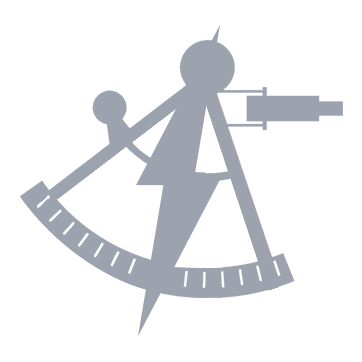Captain’s Log, Stardate 2400.9
After two days, we are ready to activate Relay Station Delta-November-Foxtrot-01 at the far edge of the Nekrit Expanse. This station has been modified from the basic design to also include a general subspace beacon, allowing it to serve as a wayfinding aid in addition to an important link in the Delta Relay Network. Lieutenant Jameson drew the short straw and will be overseeing a crew of four to monitor the station’s performance until we come back around in two months’ time.
Our course to the next beacon site appears clear, so the crew is looking forward to some downtime during our two-week cruise at warp 6.5 with nothing but nebular matter around us. I have been able to give most of the senior staff some downtime, and I’m arranging to spend some one-on-one time with each of them just to keep in the know.
Captain Armstrong had the center seat on the bridge as the final system checks for RS-DNF-01 were completed. The small station had been constructed in the main shuttlebay and then floated out in pieces by workbees. Its designation indicated that it was in the Delta Quadrant’s Nekrit Expanse, Farside. Another ship, the Erasmus, was working its way in from the other side, and the chain of beacons would hopefully provide a stable, if not exactly safe, path through the dust, debris, and mystery of the Expanse for future exploration. The region had long served as a natural barrier between the weak, poor races of the Nacene Reach, such as the Kazon and Vidiians, and the wealthier, more advanced races towards the Swallow Nebula. It also seemed to deter the Borg, and Starfleet was very interested in finding out why.
The planetary scientist in Armstrong wondered how many star systems and planets there might be to discover along the way, but initial surveys of at least their projected course suggested that they were going to be alone for the next month until they met the Erasmus. Lieutenant Jameson and his two technicians would be alone even longer.
“Status report, Lieutenant Jameson?” Armstrong asked after switching the viewscreen to an interior view of the relay station’s control room.
Jameson was young for a full lieutenant, barely 25, but he had a spotless record and was clearly eager for more. Armstrong had a feeling that he was actually pleased to be one of the command division junior officers that would be briefly marooned during this construction project, as it would give him a chance to burnish his credentials for that next rung on the ladder. He reminded him a lot of his own first officer, Commander Forrest.
“All systems are nominal, Captain. We have a solid connection to the nearest relay station in the Nacene Reach, and we’re ready to activate the subspace beacon,” the Lieutenant replied.
“Proceed,” Armstrong said.
“Reading the signal bright and clear,” Forrest said from his chair next to Armstrong’s. “How are you feeling, Lieutenant?”
Jameson chuckled. “Well, I just activated a subspace beacon, and I’m sitting on an unarmed relay station within range of who knows how many predatory things in the Delta Quadrant, sir, so I guess the word I would pick is ‘exhilarated,’” the young man replied.
“That’s what the shuttle’s for, Jameson. We souped up the relay station’s shields, but nothing over there’s worth your lives. Cut and run if you draw unwanted attention,” Armstrong said. “Understood?”
“Understood, Captain,” Jameson confirmed.
“We’ll expect regular check-ins while we’re in real-time range, and we’ll be back in about two months. Stay safe. Columbia out,” Armstrong said before nodding to Forrest to end the transmission. “Helm, lay in a course for the next relay site, Warp 6.5,” he ordered.
“Aye,” the ensign at the helm replied.
“Take us out,” Armstrong said.
The viewer was full of whirling clouds as the ship turned away from their new relay station, before a brief flash replaced that view with an oddly hypnotic tunnel-like effect as the ship pushed the interstellar gas away from the ship. Within the expanse, a ship as big as the Columbia could hardly expect to go faster than their present speed, and even that would be a challenge for the engine room to maintain, but Armstrong had faith in his people.
“We might be able to coax a few more warp factors out of the engine if we left the saucer here,” Forrest noted, as if reading the captain’s mind. “Lingering in this cloud makes me feel closed in.”
“Maybe. This is a five-year mission, though, so I hope you’re not too concerned with getting anywhere too quickly, Number One,” Armstrong replied, as he thought about that possibility. Leaving behind half of his ship wasn’t particularly palatable even if it might get them where they were going faster. It also made Forrest and easy target for the first of his one-on-one chats with the senior staff. “What do you have on the agenda for the afternoon?”
“Personnel reviews, mainly,” Forrest replied, eyes narrowing slightly at the question, as if he suspected a trap.
“Cancel them. Join me for my workout. It’ll help you get that cabin fever under control,” Armstrong said, standing up. He clapped Forrest on the shoulder. “Five minutes should be long enough to change. I’ll see you in the observation lounge. Lieutenant Commander Van Duijn, you have the bridge,” he added, leaving Forrest visibly confused as he left the bridge for the ready room.
Four minutes and forty-five seconds later, Armstrong had changed into a Starfleet-issue black tank-top and shorts and was stretching in the observation lounge as gas and dust continued to swirl in eddies around the ship’s warp field, putting on a display like the Northern Lights past the viewports. Forrest entered the room in an outfit identical to Armstrong’s.
“You always seemed more like a weights kind of guy to me, sir. Are we doing tai chi or something? Hot Yoga?” Forrest asked, scrutinizing the conference table for a moment.
“Stairs or ladders, Christopher?” Armstrong asked.
“Stairs,” Forrest replied. “But what did I just choose?”
The captain chuckled. “You just chose our route. But unfortunately, that means we’re taking ladders on our way back, which is usually worse,” he replied, tossing the commander one of the canteens he had replicated before fastening his own across his body. “We’re going from here to the ready room, by way of Deck 42. We take a lap around each deck starting on Deck 2, down to Deck 12, where we cross over into the stardrive section, and then down again. Then we come back.”
There was a moment where Armstrong was sure that Forrest would balk, but the shadow he saw on the other man’s face vanished quickly. Good—defiance would be more fun to stomp out of him.
“Straight-forward enough,” Forrest agreed.
“Don’t slow me down or puke, Number One,” Armstrong said, clapping him on the shoulder again before setting out through the starboard door and then down the ramp to the lower level of Deck 1, where the main stairwell started.
They passed models and memorabilia from previous vessels to bear the name Columbia on the way down to deck two, where they took a lap through the mostly-residential area. Deck three was much the same, and then on decks four and five they lapped the main shuttle bay.
“How often do you do this?” Forrest asked, panting a little on deck six.
“Push, pull, legs, flexibility,” Armstrong said. “Every four days,” he clarified.
“Definitely better than… reading the manuals… to get a feel for the ship,” Forrest admitted.
“Don’t get winded on me now. We’ve got a ways to go,” the captain teased, though the younger man was keeping pace.
Armstrong sped up slightly to a pace that was sustainable but too intense for them to effectively have a conversation, as he didn’t want Forrest to distract either of them from the goal. They looped around the widest decks of the saucer section, with junior crew members occasionally scurrying to the side to let the two senior officers pass them. On deck 12, the straight-away connecting the saucer to the rest of the ship provided an opportunity for a brief sprint. Despite being shorter, Forrest doggedly kept pace with the captain.
Navigating through the neck section was a little less straightforward, with the internal mechanics and structural support systems of the ship itself making each deck a little different, but they emerged into the wider decks of the upper secondary hull before delving into the bowels of the ship. It was a path that Armstrong had taken several dozen times since he’d taken command earlier in the year, but he noticed that Forrest didn’t have any hesitation as they made their way; he knew the ship just as well as a first officer would be expected to.
By the time they got down to Deck 42, they were truly in tight quarters; the ceiling was only 75% as tall as the rest of the decks, which made Armstrong need to stoop. They took a rest to drink from their canteens, as Armstrong sized up Forrest.
“Not used to this much cardio?” Armstrong asked.
“Just not in this… configuration,” Forrest said with a chuckle. “I don’t think anyone would have ever accused you of skipping leg day, Captain, but this is a little crazy.”
Armstrong decided to let the compliment lie dormant. “There are some captains who would never be on this deck in their whole careers because their domain is the bridge. That’s not who I am, though. I want to see every inch of this ship as often as I can,” he replied. “And if I can build that into my fitness, why not?”
“Yeah, I wouldn’t see Fleet Captain Logan doing this, that’s for sure,” Forrest agreed.
“Commodore, I hear now. I don’t know him very well, but I think he’d at least make the trip to engineering, if not the antimatter ejection system control room,” Armstrong said, gesturing around the tiny room they found themselves in. “Nine months in, who do you prefer working under: him or me?”
“Really?” Forrest asked, shaking his head in exasperation as he leaned on the secondary monitoring console.
“Speak freely.”
Forrest shrugged. “You two are very different. With him, I had his authority to fall back on, but with you I have my own. I like that. You’re more interesting… more inspiring…, but he had a lot more experience in the center seat that I could have learned from,” the commander replied. “You’re probably someone who I could see becoming friends with, though, and I think he could only ever be my dad.”
Armstrong noticed immediately that Forrest’s initial answer was about how much power he had in his position, which didn’t exactly surprise him, but he’d felt that the other man had mellowed a little in their time together compared to the martinet he’d inherited from Commodore Logan at the beginning of the year. Letting the first officer be the heat sink for any irritation among the crew was fine by him, though, and Forrest did have a way of coming across as smug, which Armstrong didn’t think was entirely unintentional. The commander’s demeanor was a natural forcefield that kept people from being too presumptuous around him.
Armstrong grinned. “I’ll take not being a substitute father figure, for sure,” he teased. “I think we have more in common than not, but my first officer on the Boone was a hundred-year-old Vulcan woman, so maybe that’s just in terms of comparison.”
“Yeah, I’d guess she doesn’t belong to the young and ambitious men’s club,” Forrest laughed. “What about you? Would you rather have your Vulcan here in the Delta Quadrant.”
“T’Mer was a very capable officer and an excellent scientist. For this mission, I’d rather have your charisma than her logic,” Armstrong replied. “Plus, I’m way more likely to be able to bully you into letting me go on away missions. Come on—there’s a bacon cheeseburger in it for us at the end of the run,” he said, before leading the way back up towards the top of the ship.

 Bravo Fleet
Bravo Fleet








